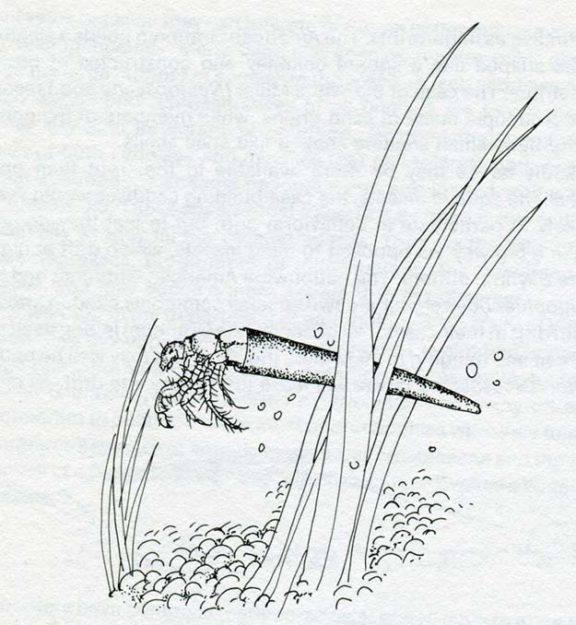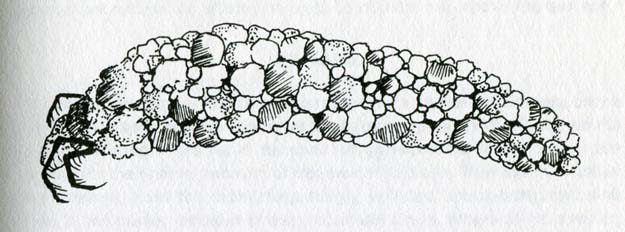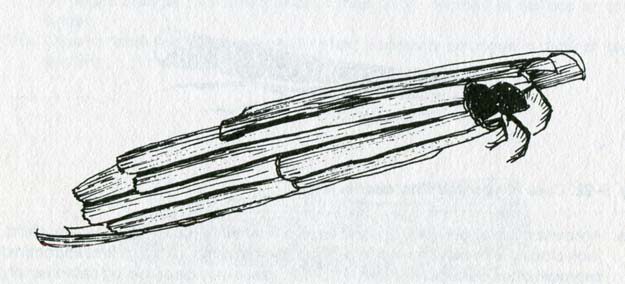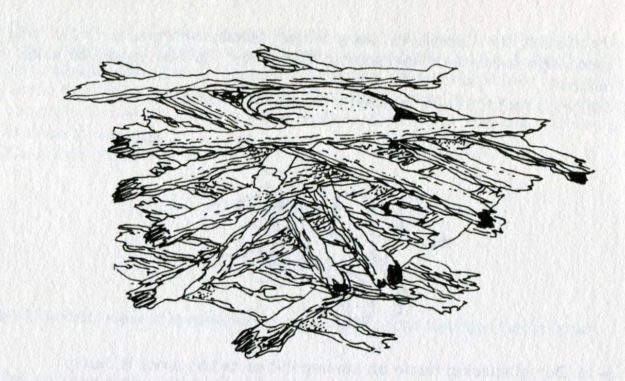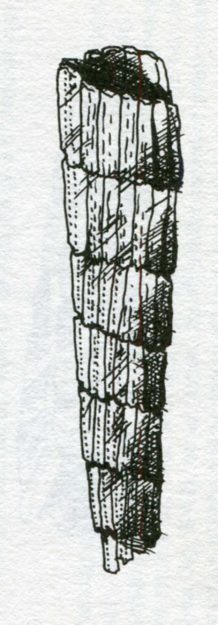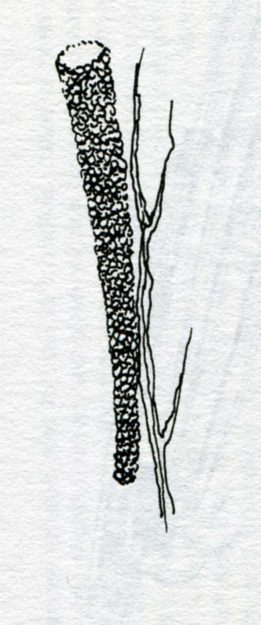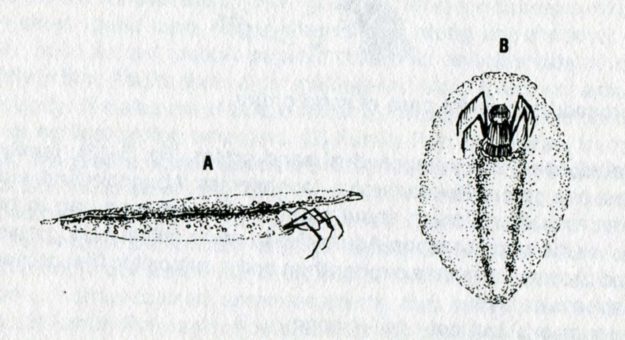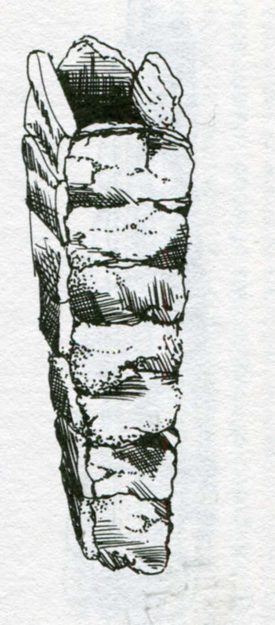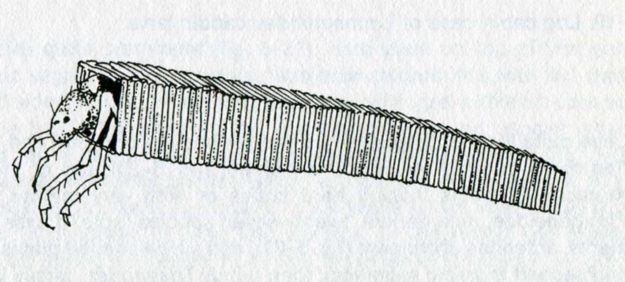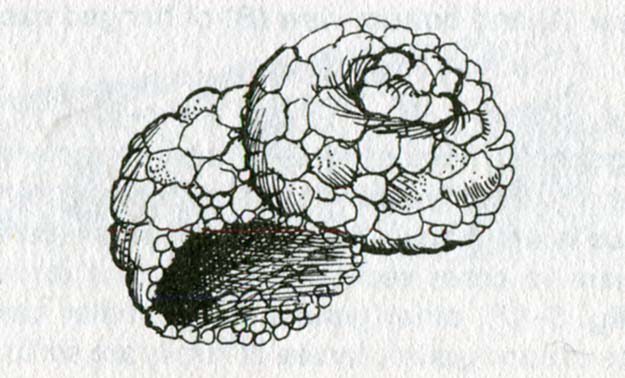Gary A. Borger, Naturals, A Guide to Food Organisms of the Trout, Harrisburg (Pa), Stackpole Books, 1980, p. 83.
Many species construct cases around themselves, using stones, sand grains, or bits of vegetation, binding these building materials with silk secreted from special glands in the mouth. Because of these houses, caddis larvae are probably the most widely recognized on the immature aquatic insects […] Many of the various familles, genera and even species of case-building larvae produce unique structures. Through careful observation cases becomes as definitive as fingerprints. The American Grannom builds a slender, tapered case shaped like a square chimney and constructed of bits of vegetable detritus. The case of the White Miller (Nectopsyche spp.) resemnles a tiny cornucopia made of sand grains, while members of the genus Helicopsyche build small shelters shaped like snail shells.

Cased caddis larvae may be more available to the trout than once thought. Of all the aquatic insects, the case-building caddises would seem sometimes in a big way.
